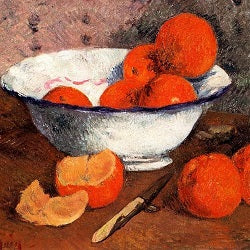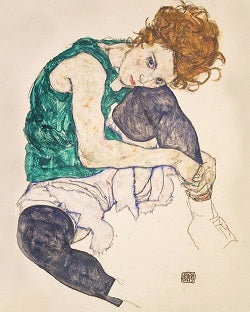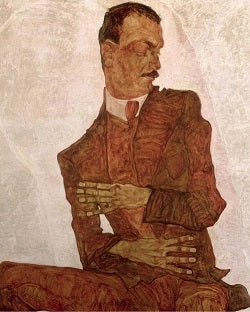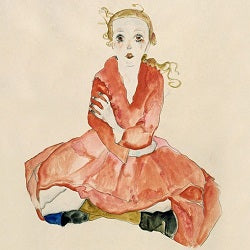In The Weave of Time - The Evolution of Scarves Through Ages
In the ever-spinning carousel of style, one accessory emerges as a timeless element, draping elegance across the shoulders of centuries. Step into the mesmerising realm of scarf chic, where the art of wrapping becomes a poetic dance with the threads of time. Through the pages of fashion history, the scarf tells a story of change, creativity, and the beauty of style evolution as it moves with the winds of time.
Through different periods in time, like the regal times of the Mughals to the contemporary era of pop icons, scarves have seamlessly integrated into the tapestry of identity. They stand as more than a mere accessory, becoming a defining element that gives a sense of uniqueness to those who drape them. showcasing a remarkable blend of efficiency and versatility, Scarves are easily draped and worn in countless ways. Whether elegantly wrapped around the neck or casually thrown over the shoulders, these accessories effortlessly adapt to various styles, making them a simple yet effective means of expressing individuality.
The Mughals
During the Mughal times, scarves were worn as an emblem of status and refinement. The Mughal elite adorned themselves with intricately embroidered silk and muslin scarves, artfully draped over shoulders or wrapped around the head. The meticulous craftsmanship and vibrant hues of these scarves mirrored the richness of the Mughal era, encapsulating a legacy where every fold spoke volumes about identity, heritage, and regal grace. Beyond their aesthetic appeal, these scarves served a practical purpose, shielding wearers from the scorching sun and dust-laden winds. The choice of fabric itself spoke volumes about the thoughtful consideration given to the climatic conditions. Muslin, known for its breathability, offered a cool reprieve in the intense heat, while silk, with its smooth texture, not only exuded luxury but also served as an effective barrier against the dust. Scarves, elegantly arranged around the head or shoulders, created a barrier against the sun's rays and shielded the face from the omnipresent dust, reflecting a fusion of form and function within the Mughal wardrobe.
The Roaring 20's
Art Deco, a time of exuberance, sophistication, and modernity that flourished primarily during the interwar period of the 1920s and 1930s. It was a design and artistic movement that emerged in response to the austerity of World War I, and it continued to influence various aspects of culture, including art, architecture, fashion, and lifestyle. Women, with their newfound sense of liberation, wrapped silk scarves loosely around their necks, creating an effortlessly chic look that mirrored the spirit of the time. These scarves, often adorned with geometric patterns or exotic motifs, were not just fashion statements; they were expressions of individuality in an era that celebrated the avant-garde. Men, too, embraced the trend with panache, donning scarves that exuded a sense of dapper charm. The scarf in the Art Deco era wasn't just an accessory; it was a visual symphony, representing the bold, vibrant, and unapologetically expressive nature of the roaring twenties. Renowned for her performances in the 1920s, Josephine Baker often adorned herself with chic and vibrant scarves as part of her glamorous stage outfits. The scarf became an integral component of her signature look, reflecting the spirit of the Art Deco era with its bold patterns and luxurious materials.
India's Independence
The Swirling Symphonies of Independence marked a pivotal moment in India's history as the nation liberated itself from colonial rule, a time where scarves were recognised as powerful symbols of resilience and identity. At the forefront of this revolutionary era, the tricolour scarf became a visual anthem, weaving together the hues of saffron, white, and green to represent the struggle for independence. Mahatma Gandhi, the stalwart of India's freedom movement, donned a simple khadi scarf, deliberately and purposefully draped around his shoulders. This humble yet significant choice of attire transformed the khadi scarf into a powerful emblem of self-reliance, unity, and a resolute commitment to nonviolent resistance. The symbolism embedded in Gandhi's scarf resonated beyond the political realm, transcending into the cultural fabric of the nation. Scarves, once considered everyday garments, evolved into potent political statements and cultural insignias, reflecting the collective spirit of a nation striving for freedom and identity.
Hollywood's Scarf Chic
The dazzling tapestry of 1950s Hollywood glamour, scarf wearing emerged as a signature accessory that adorned the necks of silver screen icons with an air of sophistication and allure. Starlets like Audrey Hepburn and Marilyn Monroe seamlessly integrated scarves into their ensembles. Scarves served as a means of adding a touch of glamour to their on-screen personas and a shield from the ever-watchful lens of the paparazzi. One of the most iconic movies associated with Audrey Hepburn and a scarf is "Roman Holiday" (1953). In this classic film, Audrey Hepburn's character, Princess Ann, explores the streets of Rome incognito, wearing a chic headscarf. The film's famous scenes, including the Vespa ride with Gregory Peck, showcase Hepburn's effortless style, and her headscarf in particular became an enduring symbol of both the character's spontaneous adventure and Audrey Hepburn's timeless elegance.
The New Generation
As the 2000s unfolded, scarf wearing experienced a vibrant revival that danced between the realms of casual coolness and red-carpet glamour. Hollywood's elite, from Jennifer Aniston to David Beckham, embraced scarves not just for warmth but as bold accessories that punctuated their outfits with flair. The why was as diverse as the styles themselves—some sought to add a touch of effortless chicness to their everyday street style, while others, like the trendsetting Beckham, made scarves an integral part of their signature looks. The causal loop, popularised with oversized scarves, radiated an effortless and relaxed vibe, while the Parisian knot added a touch of sophistication to both casual and formal attire, particularly with silk scarves. Infinity scarves made a stylish entrance, eliminating the need for intricate knots. Larger scarves or pashminas took on a bohemian flair when draped casually over the shoulders, while scarves creatively found their way to the head, becoming headbands, turbans, or loose wraps, embodying a carefree and eclectic aesthetic. The belted scarf trend introduced a novel way to accessorise, adding a pop of colour and texture to denim or dresses. Layering scarves or wearing them in unconventional, off-centre drapes offered a textured and visually dynamic effect.
In conclusion, the scarf stands as a perennial companion in the grand narrative of style. From Mughal courts to Art Deco vibrancy, independence struggles to Hollywood glamour, scarves transcend time, telling stories that resonate through folds, knots, and drapes. As the carousel of style continues its perpetual spin, the scarf remains an enduring symbol, weaving tales of elegance, identity, and individual expression across the ever-evolving fabric of fashion.

















Leave a comment